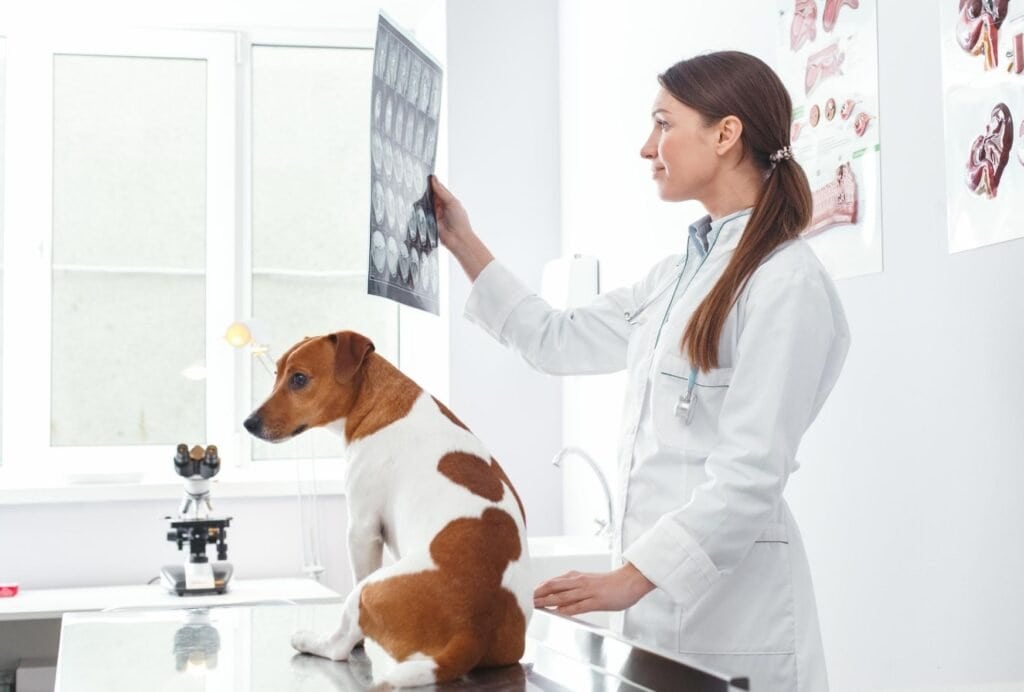
Did your vet recently tell your that your dog needs an x-ray?
No matter the reason, one of your first questions is likely: how much does it cost?
X-rays are known to be pretty expensive. And that’s not too different for our pets. And while they might save your dog’s life (for instance for your vet to be able to diagnose and cure cancer), you’ll also need to be able to pay it.
So, in this article you’ll learn everything you need to know in order to fully understand how much an x-ray can cost at the vet.
When you visit your vet for x-rays, you can expect to pay anywhere from $75 to $500 for a single x-ray. There are a number of factors that influence the price. Factors that can make an x-ray more expensive are your location and the type of facility you’re visiting, if sedation is required and if it has to be interpreted by a radiologist.
Table of Contents
Reasons Why Your Dog Might Need X-rays
It’s hard when your dog injures himself or gets sick. This can be especially true when you see how much money is involved. X-rays can be expensive, but they are also an important part of diagnosing injuries and sicknesses in dogs.
Here are a few reasons why your dog might need x-rays.
Hip Dysplasia and Arthritis
Hip dysplasia is a condition found most often in larger breeds, though it can occur in breeds of all size.
The hip joint is made up of bones that act like a ball and socket. Sometimes the ball and socket don’t fit properly, and rub together. This causes deterioration of the joint, and can eventually result in the joint no longer functioning at all.
There are several factors that play into hip dysplasia. It is a genetic condition, but can be exacerbated by your dog’s weight, obesity, the kinds of exercise he does, or a growth rate that is too fast. This is why larger dogs tend to be more prone to hip dysplasia than smaller dogs, though it does still affect small breeds.
Arthritis is painful inflammation of the joints. Although it is not the same as hip dysplasia, hip dysplasia will result in arthritis of the affected joint.
To diagnose hip dysplasia and arthritis, your vet will take an x-ray of the joint to check for the bones aligning properly as well as any degeneration.
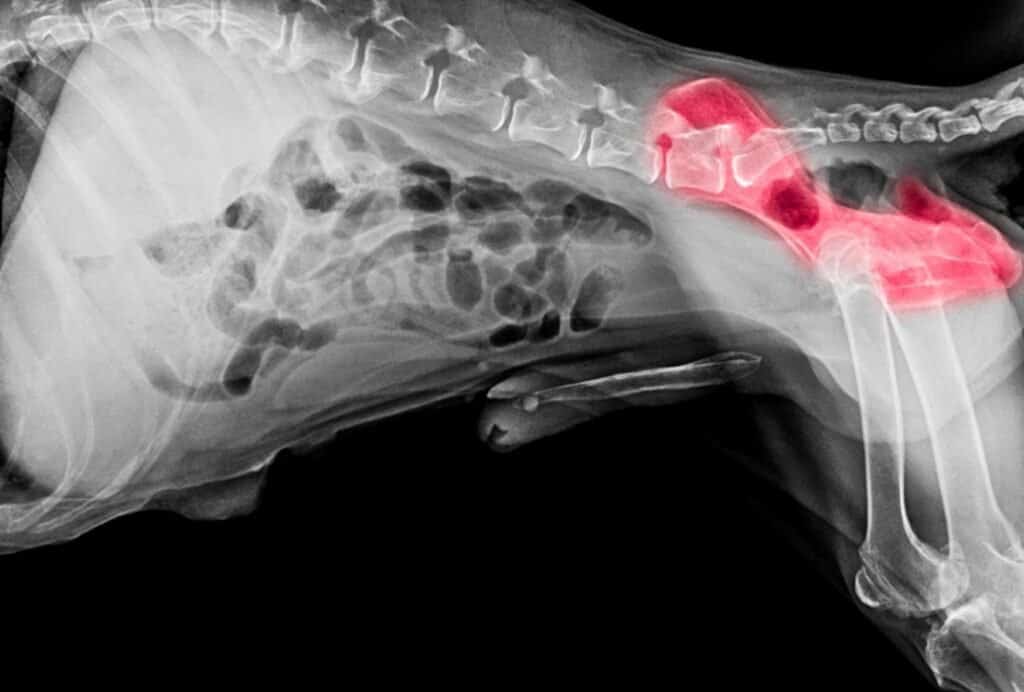
Broken Bones
If your dog was recently in an accident of some sort, and is showing signs of pain and discomfort, it could be he’s broken a bone.
There are two types of breaks or fractures. The first is called an open fracture, where the skin may be broken with the bone visible. The other type is a closed fracture. This is where the skin is intact even though the bone is broken. Look out for whimpering or crying, limping, and tenderness and pain.
Like with humans, a vet will x-ray the area where the dog is in pain to check for broken bones. If they find that there is a broken bone, they will provide treatment options based on the severity of the break, and its location.
If you think your dog has a broken bone, it is important to bring him to a vet right away. Never try to re-set a bone at home!
Foreign Items in Digestive Tracts
Many pet owners have yelled at their dogs, “What’s in your mouth?” Sometimes dogs get into things they shouldn’t. Sometimes whatever they have (or had) in their mouth can cause serious damage. If a foreign item gets lodged in your dog’s digestive tract, this can cause lacerations, infections, or even necrosis.
If your dog is salivating more than usual, choking or gagging, throwing up, not eating or defecating, seems restless, or has a distended abdomen, he may have something stuck in his digestive tract.
If you think this is the case, it’s important to get to your vet right away!
The first thing the vet will do is give your dog an x-ray to see if there is a foreign object in his digestive tract. Depending on the size and location of the object, the vet might induce vomiting. If the object is too large or too far into your dog’s digestive tract, they might have to surgically remove it.
Again, never perform any procedures on your dog at home. It’s important to have a qualified professional take a look and perform the procedure your dog needs in a safe and clean environment.

Surgical Follow Up
If your dog recently had a surgery, your vet might call you in for an x-ray to make sure that the area where you dog had the surgery is healing properly.
This is normal if your dog has had to have surgery. Your vet just wants to make sure your dog isn’t experiencing any complications post-surgery.
Bladder Stones
Bladder stones are mineral formations that grow in your dog’s bladder. They can be a variety of sizes, from small grains like sand to larger pieces the size of gravel. If your dog has blood in his urine or is having difficulty urinating, it could be that he has bladder stones.
Your vet will take an x-ray of your dog to check for any stones in the bladder. If it’s confirmed that your dog has bladder stones, there are a few ways they might be treated. If the stones are very small, your vet might be able to insert a special catheter and flush the stones out using a method called urohydropropulsion.
Sometimes the stones can be dissolved by feeding your dog a special diet. If the stones are quite large, they’ll most likely need to be surgically removed.
Pregnancy
If your dog is pregnant and you want to know how many puppies you can expect, your vet will recommend an x-ray.
Puppies’ skeletal systems won’t show up on x-rays until around day 45 to 55 of your dog’s pregnancy, so you’ll have to wait until then to get a number.
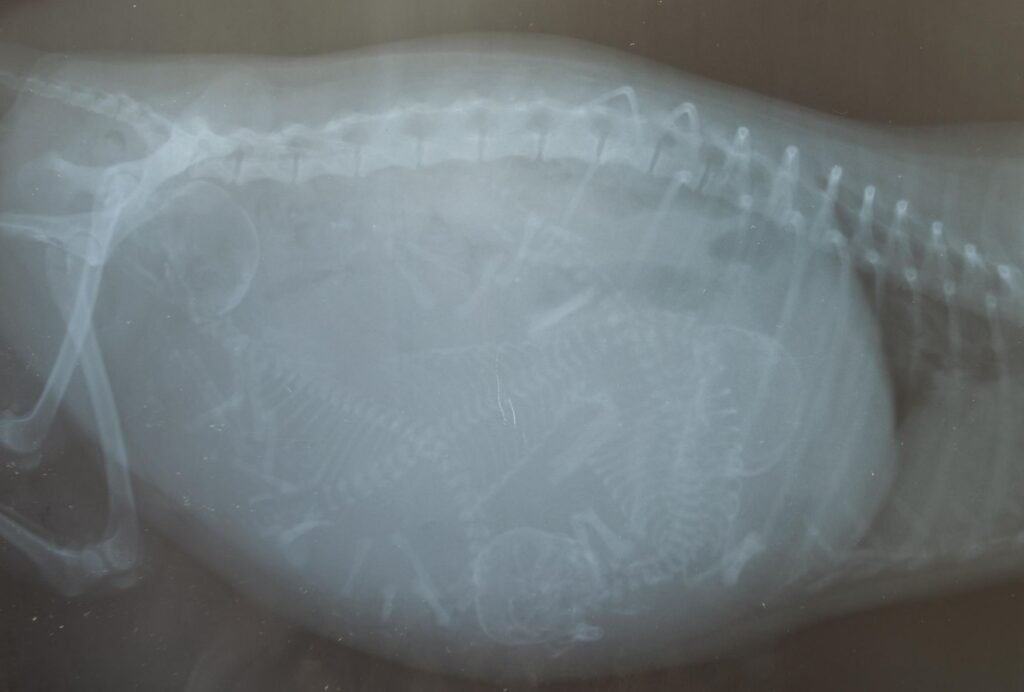
Tumors
There are many types of tumors. Some are benign, and some can be cancerous.
If your vet suspects that your dog might have a tumor, they will likely perform an x-ray. If they find a tumor, they will check to see if it is cancerous, or if it is anything to be concerned about.
They will then recommend treatment options for you and your dog.
Heart or Lung Disease
Heart and lung diseases are especially common in older dogs. If your dog is coughing frequently, especially when lying on his side, it might be time to take him to a vet.
X-rays are the best way for your vet to take a look at your dog’s lungs and heart. They’ll check the size of your dog’s heart, whether or not his lungs are clear, and your dog’s tracheal diameter.
Senior dogs will likely have to go in for regular checkups and x-rays of the heart and lungs to make sure there are no signs of heart and lung disease.

How Much Do Dog X-Rays Cost at the Vet?
Now that we know some of the reasons why your dog might need x-rays, we can talk about how much you can expect them to cost.
When you visit your vet for x-rays, you can expect to pay anywhere from $75 to $500 for a single x-ray.
Unlike the x-rays themselves, the costs aren’t black and white. There can be many things that play into how much your dog’s x-rays will cost.
Factors that Influence the Cost of X-rays
As you can see, the actual cost for an x-ray has quite a big range. That’s because there are a number of factors that influence it.
Your Location
The cost for your dog’s x-rays will be higher if you live in an area with a higher median income.
If your closest vet is in the “nice” part of town but you’re looking to save a little money, it might be worth driving a little further out for your dog’s x-rays.
Sedation or Anesthesia
When you’re getting an x-ray, you have to remain still so the technicians can get a clear image. The same is true of your dog.
Unfortunately, your dog might not necessarily understand that he’s not supposed to move around. If your dog has an injury that’s causing him pain, he’s also less likely to stay still.
If your dog just can’t quite seem to settle down long enough for the technicians to take an x-ray, they might have to use sedation or anesthesia. That will, of course, cost you extra.
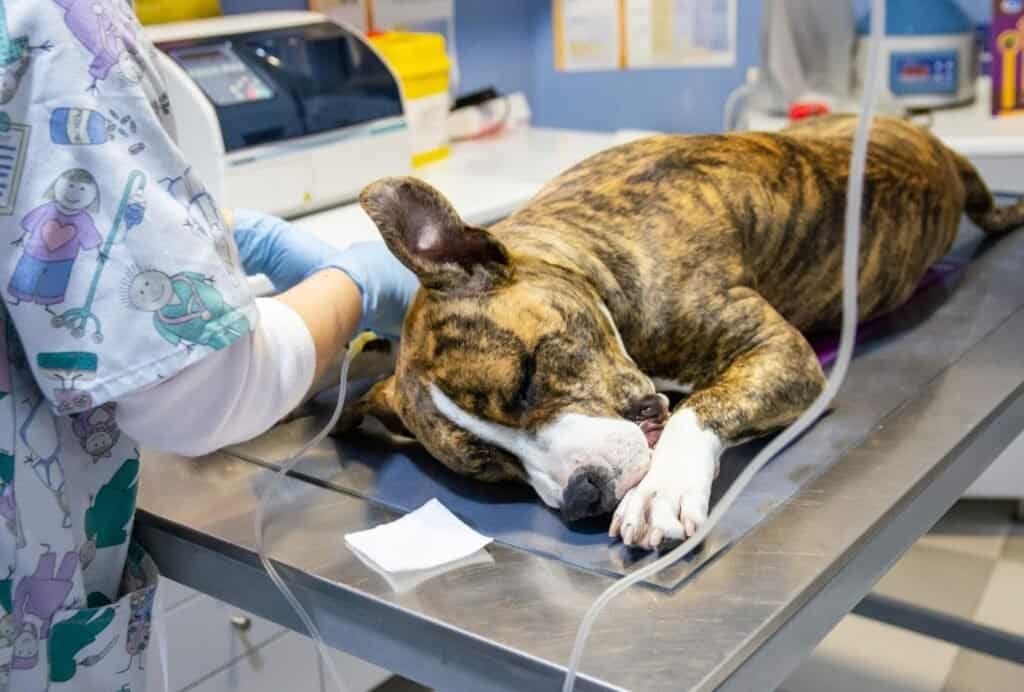
Number of Views Needed
X-rays are a 2-D image of a 3-D problem.
To get the full scope of what’s wrong with your dog, the x-ray technician may need to move your dog around to get multiple angles. If they require several different views of the problem, this will increase the cost of the x-rays.
Type of Facility
Another factor that plays into costs is the type of facility where you’re getting the x-ray done. X-rays done at a vet’s office will usually be cheaper than if you have them done at an emergency hospital.
You can also expect price differences when it comes to each individual vet or animal hospital.
Different vets will have different pricing.
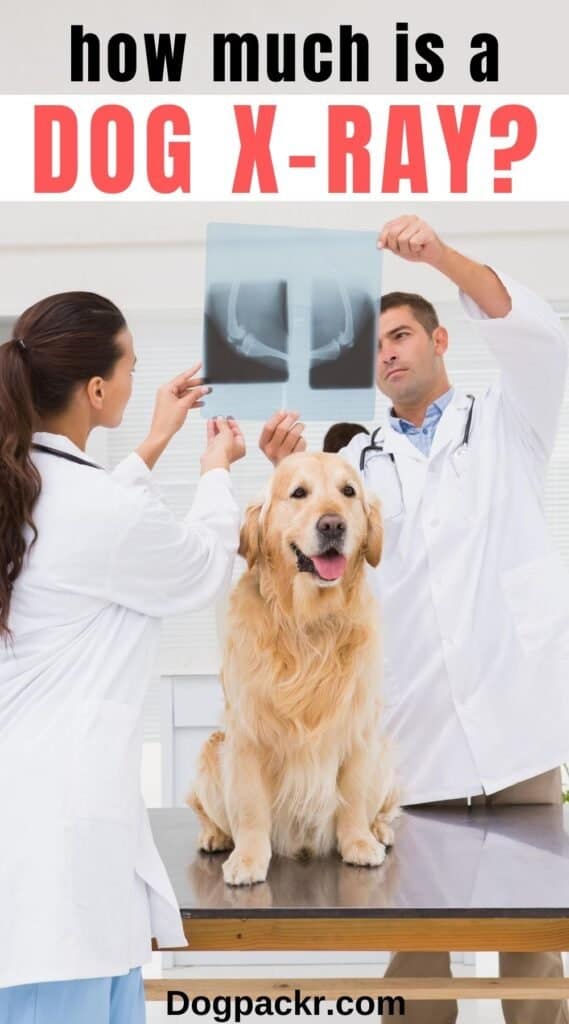
Interpretation by a Radiologist
Your vet may be able to diagnose your dog based on the x-rays they take, but sometimes that isn’t the case. If your vet isn’t sure what the images are saying, or they want a second opinion, they might have to call in a radiologist.
A radiologist is a doctor who specializes in diagnosing ailments using x-rays. They’ll be able to interpret anything your vet doesn’t understand.
If your vet has to call in a radiologist to interpret the x-rays, this will also increase your costs.
Other Questions About X-rays for Dogs
Now you might have some further questions. I’m guessing that these are something like: why are dog x-rays so expensive? Are x-rays even safe for dogs? And what other kind of diagnostic images could be used to diagnose illnesses in your dog?
So, here are the answers to those questions:
Why Are Dog X-rays So Expensive?
Taking x-rays requires a lot of specialized equipment. There’s the x-ray machine itself, then the special computer with the right programs to run the machine.
It also costs money to have the machine installed. Since it’s important that the machine works correctly, your vet will want it professionally installed.
All of this racks up quite a bit of money for your vet’s office.
There are also the costs of paying the technicians who use the x-ray machine. They also have to make sure that the technicians have all the proper protective equipment.
Consider as well the fact that all of this specialized equipment requires regular maintenance to keep it up and running. It’s not cheap for your vet’s office to have an x-ray machine!
Plus, when you add all the individual factors above, it’s no surprise that x-ray can be expensive.
Take a look at this article for a more in-depth breakdown of the costs of x-ray machines for a vet’s office.

Are X-rays Safe for Dogs?
The word “radiation” might strike fear into the hearts of owners. Is it safe for my dog to be exposed to any amount of radiation?
It turns out we’re exposed to radiation every day. Plus, the amount of radiation in an x-ray is low.
So, as long as they are performed infrequently, they’re perfectly safe for your dog.
Are Dog X-rays Different from Human X-rays?
In essence, no.
The process that is used to x-ray a dog is the exact same process for x-raying a human. So if you’re worried about the process of x-raying your dog, just know that they would do exactly the same thing for you!
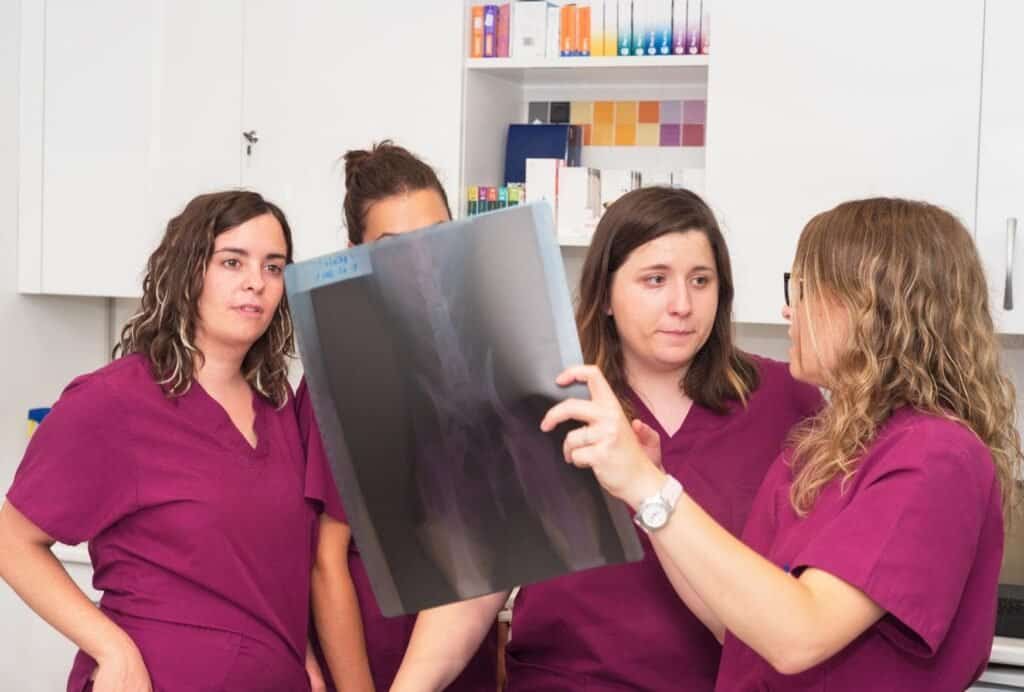
What Are CTs and MRIs Good For?
Computed tomography scans, or CT scans, are generally used to diagnose cancer.
A very thin beam creates a series of digital images, all at different angles. They show up like a cross-section of the body. These images show bones, tissue, and organs clearly.
If a biopsy is needed, sometimes CT scans can be used as guides for the needle.
An MRI is also a more detailed image of your body, though the process to take an MRI scan is different.
MRIs use magnets, radio waves, and a computer to take images of your body. Generally, MRIs are good for detecting cancers, brain injuries, or checking the structure of the heart. They are also helpful for looking at soft tissues.
How to Get Help with Paying for Your Dog’s X-rays
In this last section I’d like to show you how you can get help paying for your dog’s x-rays so that you can provide the best possible care for him.
Pet Insurance
Since you dog’s x-rays can be expensive, you might need some extra help paying them. Luckily, there are a few options. Check out Dogpackr’s previous article about paying vet bills, and the help that’s available.
It is highly recommended to consider pet insurance if you have a dog.
Embrace is one such pet insurance company. They can cover up to 90% of your dog’s medical expenses as long as they’re not for a pre-existing condition. Whether your dog has been diagnosed with cancer, or just has some allergies, Embrace’s coverage can help you.
Also check out PetPlan. With their insurance, all you have to do if your dog gets sick is get the exams and treatment, and then file a claim with PetPlan. Their insurance will reimburse you for up to 90% of the vet’s bills.
Trupanion is another pet insurance company. What’s great about them is even if your vet can’t give you an official diagnosis, Trupanion’s coverage will still cover you.
If you don’t feel like paying $30 to $50 per month and have some savings for your dog, another great option is PetAssure. They provide plans starting from $6.58 per month where they pay 25% of all vet cost, no questions asked.
Wellness Plans
Wellness plans differ from pet insurance in that they cover regular vet visits, while pet insurance won’t.
You can usually add wellness plans onto pet insurance. They normally cover preventive x-rays, along with allergy treatments, cancer care routine care and vaccines, although coverages may differ. Embrace also offers wellness plans you can purchase, so does Nationwide.
Go to A Teaching Hospital
If your dog is sick, bringing him to a teaching hospital is a great option if you’re trying to save on costs. It might be nerve-wracking to have newbies look after your dog, but teaching hospitals are actually a fantastic option!
You can expect to get high quality treatment from young, bright minds. Since they’re still in school, they’re working with the newest information out there. Teaching hospitals tend to have access to a lot of technology that other vets might not.
Plus, because teaching hospitals are geared more towards research than anything else, they tend to be a fair amount cheaper than bringing your dog to a private practice.
You might not get the regular level of personalized care you’d get from a private practice, however. Since the staff at teaching hospitals are all students, there tends to be a pretty heavy rotation.
On the other hand, the lower costs and access to newer technology might make the less personalized care worth it!
If you’re looking for some more tips on saving money, check out these 9 tips to save money on vet bills next.
Here are some impressions:
Conclusion
X-rays for your dog can rack you up a few hundred dollars in costs. There are lots of reasons why your dog might need x-rays, like broken bones, medical conditions like hip dysplasia, or if he’s eaten something he shouldn’t.
X-rays are really important tools that help vets figure out what’s wrong with your dog, and how to treat it. They may be expensive, but without them vets wouldn’t be able to accurately diagnose or treat animals.
Luckily, there are options that will help you when it comes to the cost of your dog’s x-rays. Make sure to invest in pet insurance or a wellness plan (or combo of the two)! The goal is to not need these plans or insurances. But in the case you do need them, you’ll be happy you purchased them.
If you suspect your dog may be sick or has gotten into something he shouldn’t have, you should call your vet immediately!
Never try to perform any procedures on your dog at home. Your vet has the training and equipment, like x-rays, to diagnose and treat your dog properly.
*Disclosure: This post may contain affiliate links, meaning, I get a commission if you decide to make a purchase through one of my links, at no cost to you.

